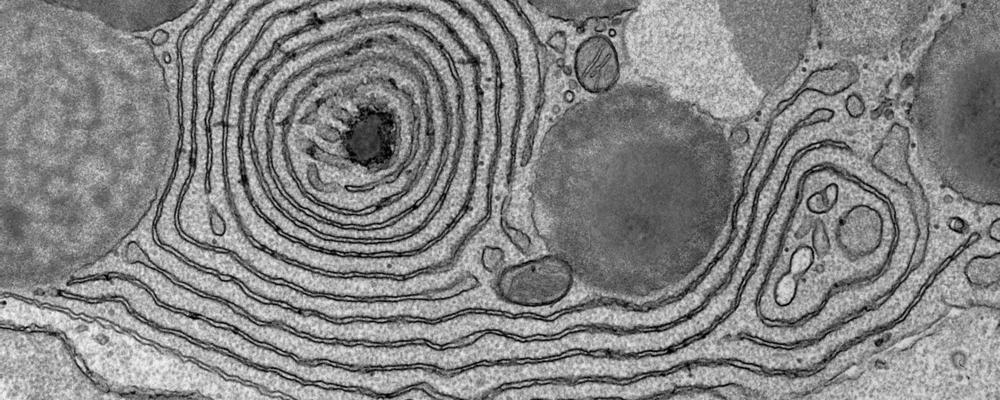
Chemical fixation and epoxy embedding
The chemical fixation and epoxy embedding techniques are used for conventional TEM imaging, 3D electron tomography and volume SEM (array tomography).
This group of techniques includes chemical fixation and contrasting with heavy metals, dehydration and embedding of the sample in resin. Glutaraldehyde fixative is essential for optimal chemical fixation and typically epoxy resins are used as they are more stable under the beam than acrylic resins and contribute to better contrast. The resin-embedded sample is sectioned and mounted on TEM support grids or silica substrates.
While the whole process takes up to several days when performed manually, it can be shortend in extreme cases to a couple of hours in the automated microwave-assisted processor Leica EM AMW. Specimen pieces are placed in processing baskets which are then stacked and placed in the processor. Up to 20 reagent vials are then moved up to the specimen chamber one at a time and microwaves applied to the sample area improve reagent penetration shortening the incubation times to minutes. Microwave processing can result in reduced artefact occurence but requires optimisation for each specimen type.
